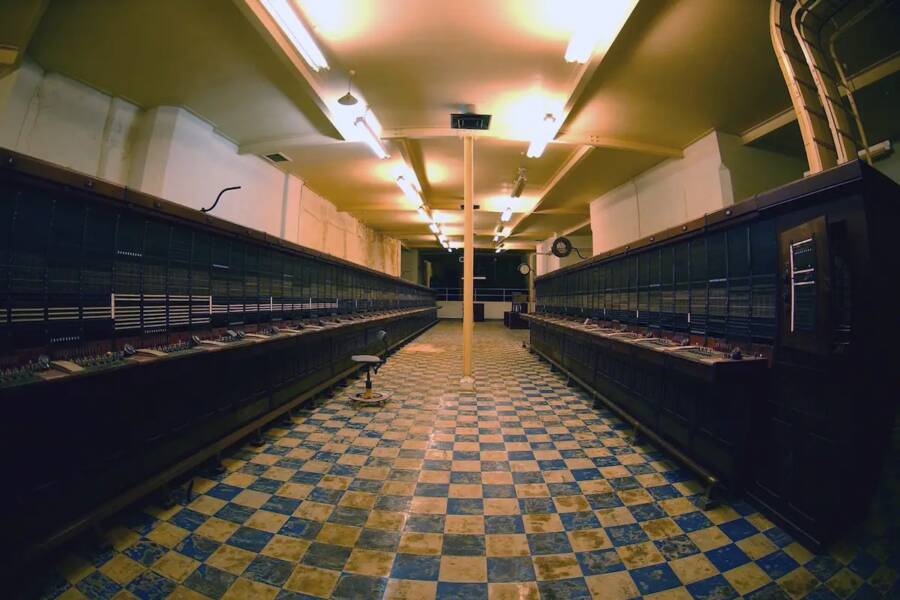Burlington Bunker In Britain

British Ministry of DefenceThe massive 1950s switchboard inside the Burlington Bunker.
At the end of 2004, the British Ministry of Defence posted a short, strange announcement: A “formerly secret Government underground site near Corsham in Wiltshire” had just been declassified. The site was intended to be a potential relocation site for the government in the event of a nuclear war — one that had remained a secret for around 40 years.
Per an Insider report, the story of Burlington Bunker began in the early 1950s, when the Cabinet Office decided to create a new seat of government with a focus on preparing for the possibility of an all-out nuclear war.
Then, in 1955, the Central Government War Headquarters was commissioned to begin work on the Burlington Bunker in earnest, in a 240-acre abandoned quarry. There, they constructed a massive underground facility, equipped to house 4,000 government staff members (without their families) for 90 days if a nuclear attack suddenly fell upon the country.
The reinforced concrete walls were 100 feet deep, and the facility was equipped with a variety of rooms including bedrooms, offices, two canteens, a bakery, a hospital, a BBC broadcasting studio, and a room lined wall to wall with wired telephones and one of the largest switchboards in the world. The site was so massive that it was equipped with electric buggies to transport potential residents through its vast underground streets.
Most of the facility remained unused for years, though maintenance was largely kept up with in the bunker until 1991, when it was deemed by the government to be too run-down and expensive to keep maintaining. Over the next decade or so, it gradually fell into disrepair before being officially decommissioned — and declassified — in 2004.
Following the initial government revelation, they began trying to sell the site and the ground above it to private investors. According to Atlas Obscura, some potential buyers included a data storage site, a European wine seller, a nightclub, and a 1950s-themed amusement park.





